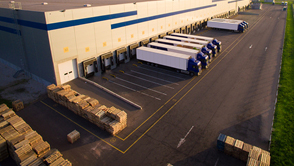
There is nothing new in the fact that today’s manufacturers, wholesalers and retailers, along with just about every other industry you can think of, continues to turn to ‘robots’ for greater efficiency and profitability. Amazon, for example, announced more than five years ago that it had 15,000 robots operating across 10 warehouses and by 2016 they estimated they had 30,000 robots in use – and those numbers are rapidly growing. It only makes sense that Walmart would be leveraging a similar approach.
In a recent article published by Bloomberg, entitled, “Walmart’s Kickstarting a $1 Trillion Driverless Delivery Market,” authors Keith Naughton and Matthew Boyle point out that in order to deal with escalating costs, the giant retailer is trying out driverless vehicles.
This solution is an important one for several reasons, but one of the most obvious is found in the results of a survey conducted by the American Transportation Research Institute (ATRI) which confirms that there is a significant lack of qualified drivers available today to move our country’s freight, with the shortage of drivers expected to balloon to unprecedented numbers by 2026.
Although the loss of drivers matters, change could not take place without today’s technology, which has made possible a wide variety of options. Drones are deployed to bring groceries to residential areas, pizzas are delivered by remote control and there are all sorts of in-store robots that are enabling leaner, more flexible practices, minimizing labor costs and enhancing the customer experience.
To remain competitive todays means being able to leverage the available technology while looking to the future for what is on the horizon.
It is with this in mind that Walmart is embracing the driverless care concept, using driverless vehicles specifically to cover fixed routes from warehouse to warehouse or even from warehouse to a smaller pick up point. This path is called the “middle miles” and represents the most expensive part of the entire supply chain. So if Walmart can reduce these costs by using robo-vans, the savings will be remarkable. Along with major cost cutting, there is also less fear of accidents which also makes the concept much more palatable. The future may very well be defined for retailers like Walmart in the concept of robo-rigs or robo-vans.
Over the months we have addressed the big picture regarding both the use of robots in the commercial market space and the need for driverless trucks because the topics fit together so seamlessly. We will continue to keep you updated regarding the impact of rapid technology advances, the use of robotics and the increasingly dependable use of driverless trucks.


